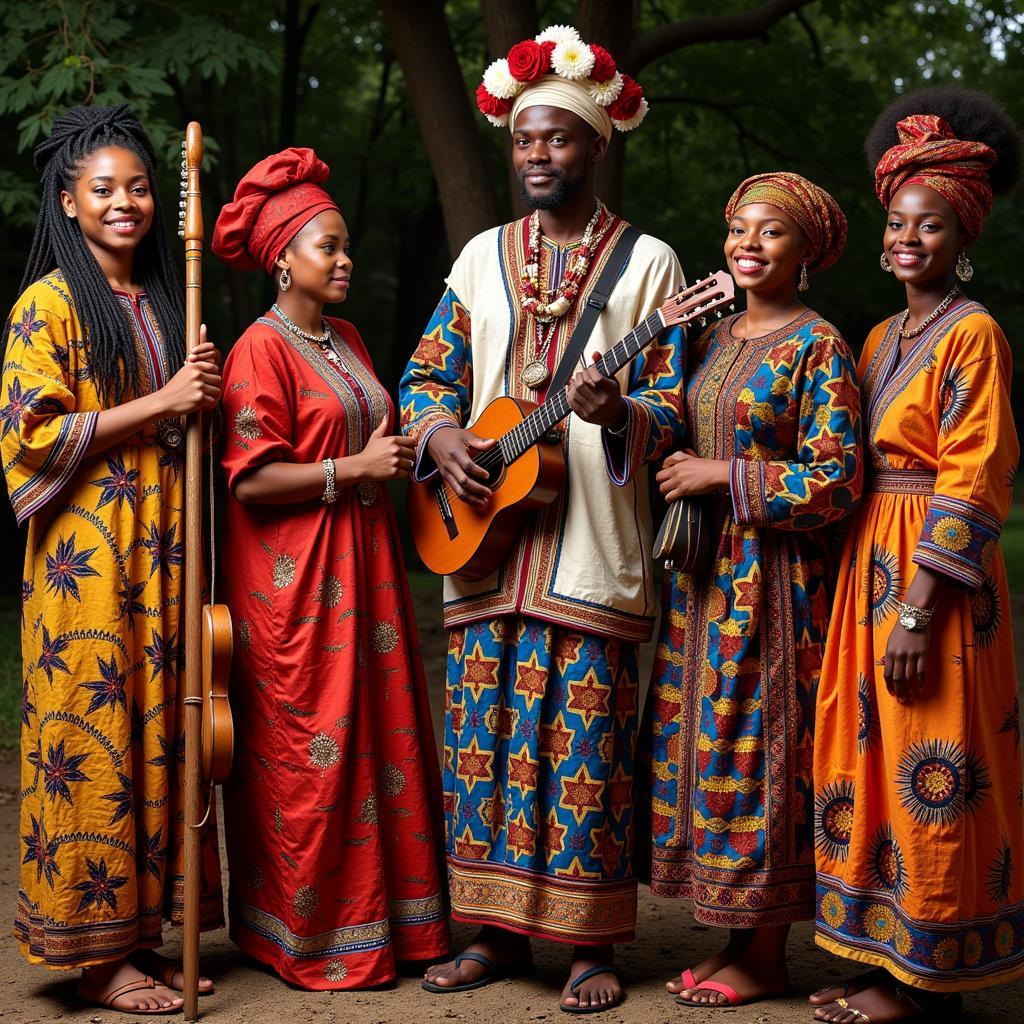Exploring the Rich Heritage of African Ceramic Art
African Ceramic Art is more than just pottery; it’s a vibrant tapestry woven with history, culture, and artistic expression. From the utilitarian to the ceremonial, these clay creations offer a glimpse into the diverse traditions of communities across the continent. This art form reflects a deep connection to the earth and embodies the spirit of innovation passed down through generations. We’ll delve into the fascinating world of African ceramics, exploring its diverse forms, techniques, and cultural significance.
The history of African ceramic art stretches back millennia, with evidence of pottery production dating back to prehistoric times. These early pieces served essential functions, used for storing food and water, as well as in cooking and daily life. Over time, these functional objects evolved, incorporating intricate designs and symbolic meanings, transforming into works of art. For example, the Nok culture of Nigeria, known for its terracotta sculptures, provides a compelling example of this evolution, showcasing the early mastery of clay as an artistic medium. Soon after, different styles and traditions began to emerge across various regions, each reflecting the unique environment, beliefs, and social structures of the people. Want to explore more about African artists using this medium? Check out these african ceramic artists.
The Diverse Forms of African Ceramic Art
African ceramic art encompasses a wide array of forms, from simple, elegant vessels to elaborate sculptural pieces. Pottery traditions vary significantly across the continent, reflecting the specific needs and aesthetic preferences of different communities. In some cultures, pottery is primarily a women’s craft, passed down through matrilineal lines, while in others, both men and women participate in the process.
- Utilitarian Ware: Everyday objects like pots, bowls, and plates are often adorned with decorative patterns or textures, elevating the mundane to the artistic.
- Ceremonial Objects: These pieces play a vital role in rituals and ceremonies, often imbued with symbolic meanings related to ancestry, spirituality, and the natural world.
- Figurative Sculptures: From human figures to animal forms, these sculptures can represent deities, ancestors, or important figures in local folklore.
Techniques and Materials in African Ceramic Art
Traditional African ceramic art often relies on locally sourced clay and simple, yet effective techniques. The methods used in creating these pieces have been refined over centuries, passed down through generations of skilled artisans.
- Hand-building: This technique involves shaping the clay by hand, without the use of a potter’s wheel, allowing for organic and expressive forms.
- Coiling: Thin coils of clay are stacked and smoothed together to create the desired shape, often resulting in unique textures and patterns.
- Firing: Open-air firing, using wood or dung, is a common method, often producing variations in color and finish that add to the character of the piece.
The beauty of african beads for sale and other crafts, such as pottery, reflects the richness of African cultures.
What is the Cultural Significance of African Ceramic Art?
African ceramic art holds deep cultural significance, reflecting the beliefs, values, and traditions of diverse communities. These objects are not merely decorative; they serve as tangible links to the past, embodying the spirit of ancestors and the continuity of cultural heritage.
- Storytelling: Many ceramic pieces feature intricate designs and patterns that tell stories, depict historical events, or convey important cultural messages.
- Social Status: In some cultures, the ownership or use of certain types of pottery can signify social status, wealth, or belonging to a particular group.
- Spiritual Beliefs: Ceremonial pots and figures often play a crucial role in religious practices, serving as conduits to the spiritual realm.
Preserving and Appreciating African Ceramic Art
Today, African ceramic art is gaining increasing recognition for its artistic merit and cultural significance. Museums and galleries around the world are showcasing these remarkable creations, highlighting the rich heritage they represent. If you’re interested in exploring African folk art further, a great resource might be an african folk art pdf.
“African ceramics are a testament to the enduring power of human creativity,” says Dr. Anika Kwame, a renowned anthropologist specializing in African art. “These pieces speak volumes about the history, beliefs, and artistic ingenuity of the people who created them.”
“The beauty of these objects lies not only in their aesthetic qualities but also in the stories they tell and the cultural values they embody,” adds Dr. Kwame. These pieces, as diverse as an african american nativity set, showcase unique perspectives and offer insights into cultural practices.
Conclusion
African ceramic art offers a captivating journey into the heart of African culture. From the utilitarian to the sublime, these clay creations speak volumes about the ingenuity, creativity, and spiritual beliefs of diverse communities across the continent. By understanding and appreciating these remarkable works of art, we gain a deeper understanding of the rich tapestry of African history and culture. Explore the world of African ceramic art and discover the stories it has to tell.
FAQ
- What are the main types of African ceramic art?
- How are traditional African ceramics made?
- What is the cultural significance of African pottery?
- Where can I see examples of African ceramic art?
- How can I support contemporary African ceramic artists?
- What are some famous examples of African ceramic art?
- Are there any online resources for learning more about African ceramics?
When you need assistance, please contact us at Phone: +255768904061, Email: kaka.mag@gmail.com, or visit us at Mbarali DC Mawindi, Kangaga, Tanzania. We have a 24/7 customer service team.

